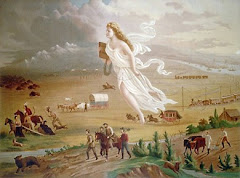 Daedalus and Icarus
Daedalus and Icarus Sir Anthony Van Dyck, c. 1620
On the final next week (5/9 at 9 a.m. in CAS 223) you will complete 12 ID questions (out of 12) and write two essays. The ID questions and the essay questions will be selected from the 50 terms & 4 topics below.
Only 12 of the ID terms will be presented, and you will have to answer all 12. The 4 essay topics will be grouped in pairs, and you will have to write on one topic from each pair.ID NAMES & TERMS:1 Howard Scott
2 Technocracy
3 Futurama
4 Leo Szilard
5 Trinity
6 Bikini
7 Konstantin Tsiolkovsky
8 Robert Goddard
9 Werner von Braun
10 October, 1957
11 John Glenn
12 Valentina Tereshkova
13 Velcro
14 Tang
15 Apollo 8
16 Apollo-Soyuz
17 Challenger
18 La Mettrie
19 Charles Babbage
20 Alan Turing
21 IBM punch cards
22 "War Games"
23 "Solid State" electronics
24 "Pong"
25 MS-DOS
26 The "1984" ad
27 Moore's Law
28 Philo T. Farnsworth
29 Populuxe
30 Newton Minnow
31 Marshall McLuhan
32 "All You Need is Love"
33 DARPA
34 ARPANET
35 Tim Berners-Lee
36 LambdaMOO
37 Buckminster Fuller
38 eugenics
39 James Watson and Francis Crick
40 Asilomar Conference
41 "12 Monkeys"
42
Diamond v. Chakrabarty43 Humulin (tm)
44 Human Genome Project
45 J. Craig Venter
46 John Muir and Gifford Pinchot
47 Rachel Carson
48
The Whole Earth Catalogue49 Solar-Thermal
50 Singularity
ESSAY TOPICS:w. Consider the changing relationship between human beings and nature as depicted in
any three primary sources from the course reading. How does each author depict the impact of new technologies on the landscape, on living things, and on the human body itself? How does each of these works seem to evaluate the impact of human technology on the natural world---as positive, negative, or something else?
x. Consider the cultural and political impact of new technologies and new modes of production / consumption as explored in
Paul Boyer's By the Bomb's Early Light and Lizabeth Cohen's A Consumers' Republic. Although both authors concentrate on the period following WWII, what different types of technological change does each view as most influential and why? How might a student of history integrate and expand upon their studies of U.S. culture and politics in the period of rapid technological and social change following WWII?
y. Imagine that you have been given to the opportunity to replace
three secondary sources on the HI 351 syllabus with three very easy-to-watch popcorn movies. In order to seize this opportunity, however, you must first make a detailed and compelling case that each popcorn movie you propose to add to the syllabus explores all of the same major issues as each book you propose to subtract---and explores them more effectively.
z. The painting above depicts Daedalus advising his son Icarus on how to safely use the wings he has made for him. As we know from the story, (& from the vapid smile on the boy's face), this advice will not be heeded. In your estimation, is the human race, in its use of new technologies, more likely to follow the fate of Daedalus or Icarus? In you answer to this question, be sure to consider the arguments of those we have read and studied, among them Aldous Huxley and Freeman Dyson, who have taken a clear position on this question. Explain whose writings you find more persuasive, and why.




